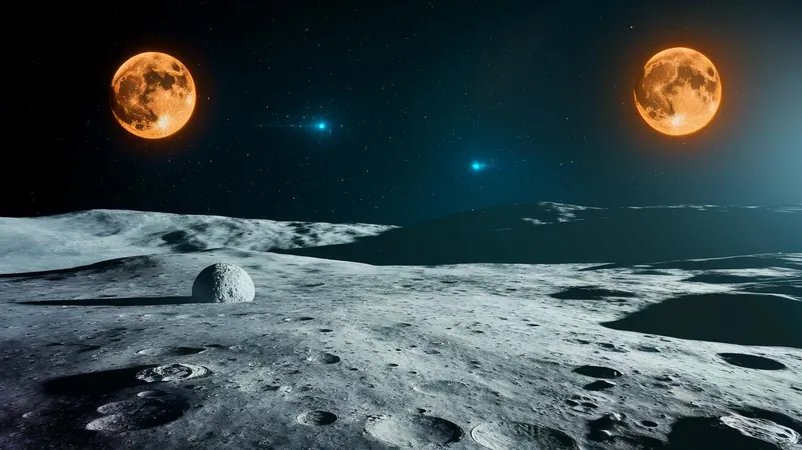
NASA Discovers Moon's Hidden Water Source: Solar Wind Revealed as Key Player!
2025-04-19
Author: Arjun
In a shocking revelation that has left scientists buzzing, NASA has pinpointed a game-changing source of water on the moon: the sun’s solar wind! For years, the origins of lunar water remained shrouded in mystery, with theories ranging from frozen comets to ancient buried ice. But this groundbreaking discovery may redefine our understanding and future plans for lunar exploration.
A Pioneering Experiment: Simulating the Moon's Harsh Conditions
At NASA's Goddard Space Flight Center, research scientist Li Hsia Yeo led a revolutionary experiment designed to mimic the moon’s extreme environment. In partnership with Jason McLain, Yeo crafted a unique lab setup that included a solar particle beam and a specially designed chamber. This high-tech setup enabled the team to replicate 80,000 years of solar wind exposure over the span of mere days!
Unlocking the Water Mystery: Solar Wind Interactions
Using pristine lunar dust samples collected during the famed Apollo 17 mission, the researchers took painstaking steps to eliminate contamination. After baking the samples to drive out moisture, they subjected the lunar dust to simulated solar wind, and the results were astounding! This experiment confirmed the long-hypothesized theory that solar particles play a pivotal role in the formation of lunar water, validating decades of research.
The Science Behind Lunar Water Formation
So, what’s the science behind this groundbreaking finding? The key lies in the interaction between solar wind protons—essentially hydrogen nuclei—and the lunar surface. With the moon lacking an atmosphere or magnetic field, these protons strike the surface freely, leading to the formation of hydrogen atoms. When these atoms combine with oxygen from lunar minerals, they create hydroxyl and potentially even water molecules.
Game-Changer for NASA's Artemis Program!
The implications of this research are monumental, especially for NASA's Artemis program, which aims to return humans to the moon, specifically the South Pole—thought to be rich in frozen water. This study indicates that the moon's water may not just be a relic of the past but part of a dynamic, ongoing process driven by solar wind. As the lunar day progresses, variations in water spectral signals suggest a vibrant water cycle, offering tantalizing opportunities for sustainable human presence on the moon.
Harnessing Solar Power: A New Frontier for Lunar Exploration
As new studies continuously peel back the layers of lunar mysteries, the potential to use lunar resources is becoming more promising than ever. With solar wind playing a crucial role in providing water, future missions could exploit these natural processes. Imagine a future where humans can create water using only lunar soil and solar hydrogen—could this be the key to establishing a sustainable presence on the lunar surface?
As we stand on the brink of this new era of space exploration, the quest for lunar water—and possibly life beyond Earth—continues to ignite imaginations worldwide. What will this discovery mean for humanity's future in space?



 Brasil (PT)
Brasil (PT)
 Canada (EN)
Canada (EN)
 Chile (ES)
Chile (ES)
 Česko (CS)
Česko (CS)
 대한민국 (KO)
대한민국 (KO)
 España (ES)
España (ES)
 France (FR)
France (FR)
 Hong Kong (EN)
Hong Kong (EN)
 Italia (IT)
Italia (IT)
 日本 (JA)
日本 (JA)
 Magyarország (HU)
Magyarország (HU)
 Norge (NO)
Norge (NO)
 Polska (PL)
Polska (PL)
 Schweiz (DE)
Schweiz (DE)
 Singapore (EN)
Singapore (EN)
 Sverige (SV)
Sverige (SV)
 Suomi (FI)
Suomi (FI)
 Türkiye (TR)
Türkiye (TR)
 الإمارات العربية المتحدة (AR)
الإمارات العربية المتحدة (AR)